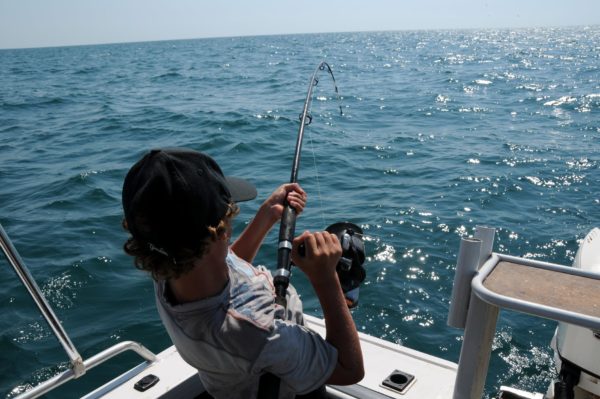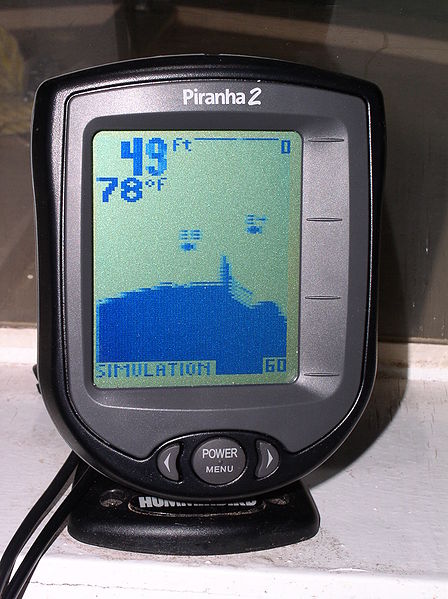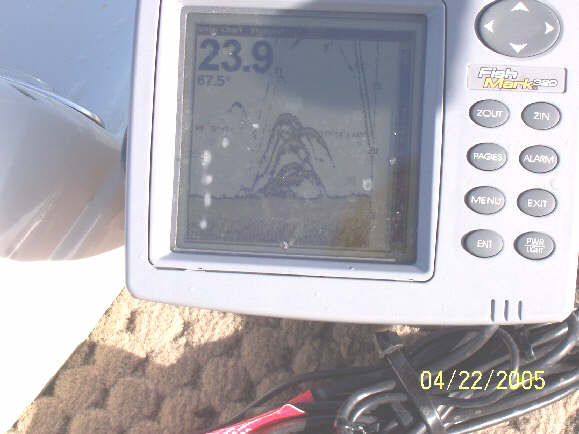How Does a Fish Finder Work
Category: article
Aug 3rd, 2020 by Keith Worrall
Modified Aug 3rd, 2020 at 11:08 PM
by Mackenzie Grove
Just a few years ago, fish finders were bulky marine equipment with limited features. Not all anglers preferred to have them. Some also thought they were a waste of money.
However, things began to change with the arrival of 3D CHIRP Sonar technology. Lowrance was one of the first companies to introduce affordable fish finders equipped with 3D CHIRP Sonar.
Subsequently, other manufacturers like Deeper, Humminbird, and Garmin introduced newer, more advanced fish finders.
This post is intended to get you acquainted with modern fish finders. By knowing how they work, you will be able to use them more efficiently.
A fish finder will display the exact location of the fish no matter how muddy the water is.
What is a Fish Finder?
A fish finder is a piece of advanced equipment used by fishermen or anglers to locate fish underwater.
Fishers popularly use both old-school and modern fish finders all over the world. Modern fish finders are generally utilized by sport and commercial fishermen. It comes with a LED screen, a sonar transducer, and connecting cables. The entire setup can fit inside the hatchet or a kayak or a canoe.
The sonar sends sound waves in the desired direction underwater. The waves hit the bottom of the water body, including the fish and other objects.
Finally, the reflected signal is displayed on the screen in the form of graphs, charts, and tables. The primary goal of a fish finder is to locate fish, display the bedrock’s structure, and measure the water’s depth.
How Does a Fish Finder Work
As I mentioned in the earlier section, a fish finder is equipped with a 2D or 3D sonar transducer, which essentially is a sensor that sends and receives sound waves underwater.
Depending on the temperature, salinity, and pressure of the water, the fishermen are supposed to set the frequency of sound waves.
When the sound waves hit an object (fish, debris, or bedrock) underwater, the aberration in the wave pattern is interpreted by the processors in the fish finder.
A fish finder is capable of determining the dimension and location of the aberration underwater. Parameters like size, composition, and shape are displayed on the screen, as shown in the image below.
Modern fish finders are equipped with a high-definition display screen. Some also let you view the events occurring beneath the hull of the vessel life-like crystal clarity. However, fish finders do not make use of cameras.
Furthermore, you will also be glad to know that modern fish finders operate with multiple frequencies. Generally speaking, the higher the frequency, the more detailed the information will be.
Multiple frequencies allow an angler to get a better perspective of the fish and surroundings underwater.
On one screen, they can view the graphical representation. In contrast, on other portions of the same screen, they can inspect the real life-like images.
The graph shows the dimensions of the objects in the water. It also shows the information using RGB colors. Hence, it becomes easy to tell between a rock and a piece of wood.
Shortcomings of a Fish Finder
Just like every other electronic equipment, a fish finder is not entirely accurate. Also, it has some shortcomings that can be, at times, frustrating. For instance, a fish finder works correctly when the boat is stationary. The sound waves hit the bedrock, and the information is interpreted as it is.
However, a fish finder cannot get an accurate read on the objects in water when the boat is in motion.
The symbol of the fish appears curved when the boat is in motion. With the fish arches, the manufacturers intend to help the angler discern between a fish and other objects, but it’s still a downside of the device.
The above image shows a school of bass fish attacking a school of small-sized baitfish. The baitfish appear like an arch, whereas the bait is shapeless (almost like an irregularly shaped ball). It can be difficult for an angler to observe the activity underwater when a school of fish is involved.
How Can a Fish Finder Tell Between a Fish and a Piece of Wood?
Beginner anglers often wonder how a fish finder discerns a fish from other objects in the water.
According to a report by the United States National Ocean Service, fish have an organ called swim bladder. It is a gas-filled chamber capable of producing and receiving sound.
A sonar is designed to pick up the noise arising from the swim bladder. The frequency of the sound helps the sonar can identify the species of fish.
Summary
Traditional fishers prefer not to use a fish finder as it comes with a learning curve and takes up space in the fishing vessel. A fish finder offers a lot more than locating the fish or calculating the depth of water.
Once you learn how to use a fish finder properly, you will not only catch fish but also venture out in new and unexplored territories.


